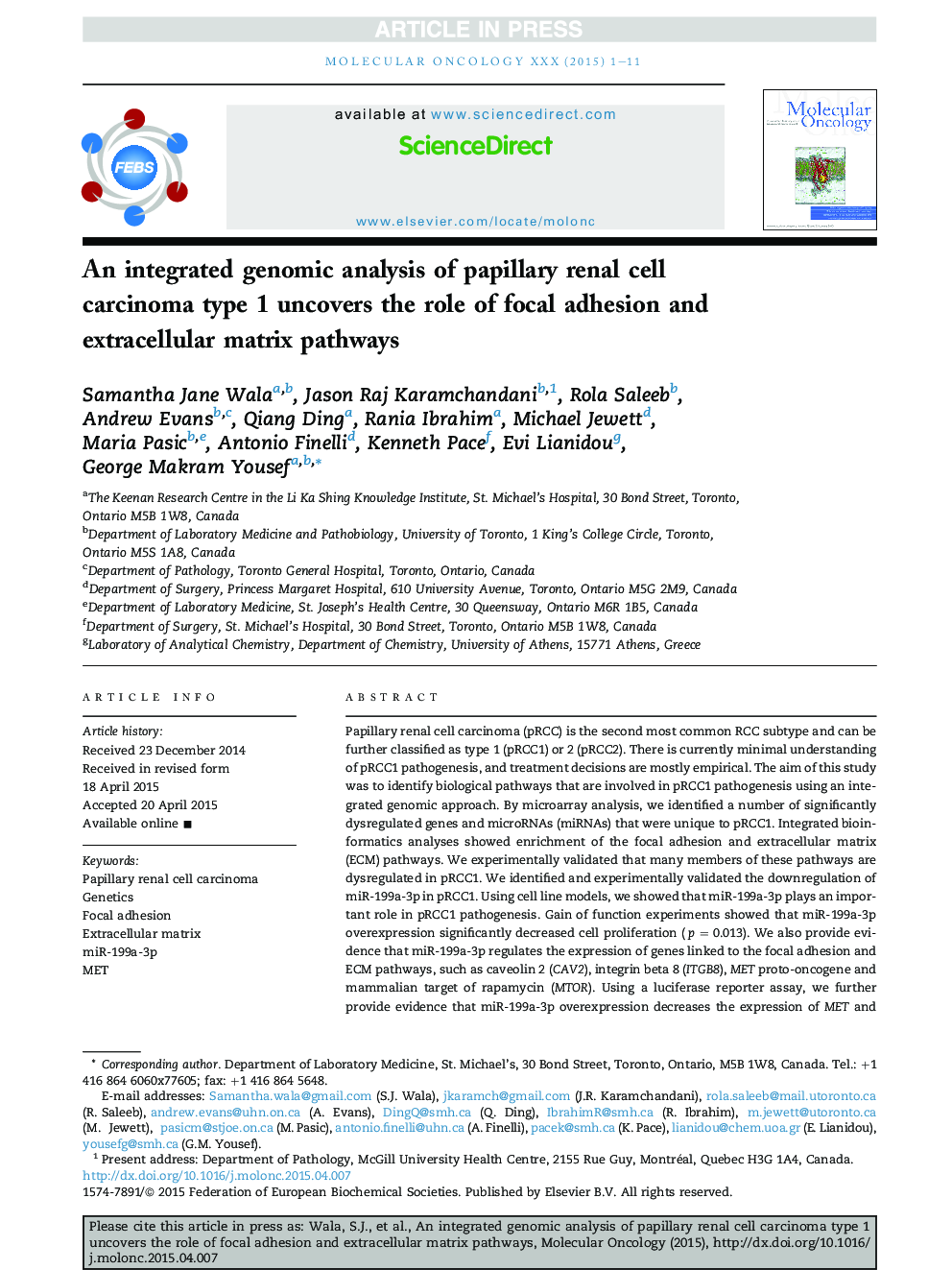| Article ID | Journal | Published Year | Pages | File Type |
|---|---|---|---|---|
| 10914708 | Molecular Oncology | 2015 | 11 Pages |
Abstract
Papillary renal cell carcinoma (pRCC) is the second most common RCC subtype and can be further classified as type 1 (pRCC1) or 2 (pRCC2). There is currently minimal understanding of pRCC1 pathogenesis, and treatment decisions are mostly empirical. The aim of this study was to identify biological pathways that are involved in pRCC1 pathogenesis using an integrated genomic approach. By microarray analysis, we identified a number of significantly dysregulated genes and microRNAs (miRNAs) that were unique to pRCC1. Integrated bioinformatics analyses showed enrichment of the focal adhesion and extracellular matrix (ECM) pathways. We experimentally validated that many members of these pathways are dysregulated in pRCC1. We identified and experimentally validated the downregulation of miR-199a-3p in pRCC1. Using cell line models, we showed that miR-199a-3p plays an important role in pRCC1 pathogenesis. Gain of function experiments showed that miR-199a-3p overexpression significantly decreased cell proliferation (p = 0.013). We also provide evidence that miR-199a-3p regulates the expression of genes linked to the focal adhesion and ECM pathways, such as caveolin 2 (CAV2), integrin beta 8 (ITGB8), MET proto-oncogene and mammalian target of rapamycin (MTOR). Using a luciferase reporter assay, we further provide evidence that miR-199a-3p overexpression decreases the expression of MET and MTOR. Using an integrated gene/miRNA approach, we provide evidence linking miRNAs to the focal adhesion and ECM pathways in pRCC1 pathogenesis. This novel information can contribute to the development of effective targeted therapies for pRCC1, for which there is none currently available in the clinic.
Related Topics
Life Sciences
Biochemistry, Genetics and Molecular Biology
Cancer Research
Authors
Samantha Jane Wala, Jason Raj Karamchandani, Rola Saleeb, Andrew Evans, Qiang Ding, Rania Ibrahim, Michael Jewett, Maria Pasic, Antonio Finelli, Kenneth Pace, Evi Lianidou, George Makram Yousef,
